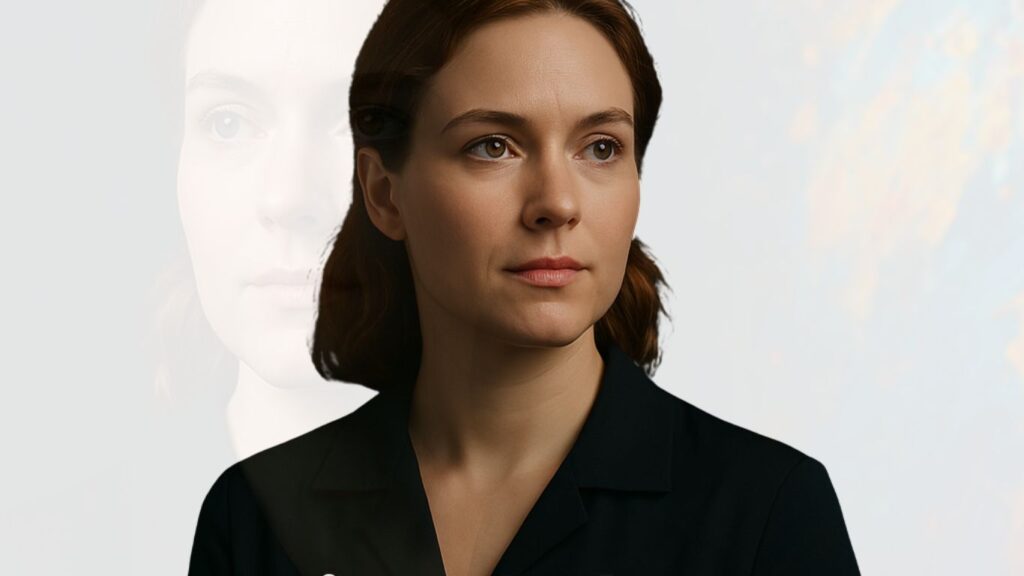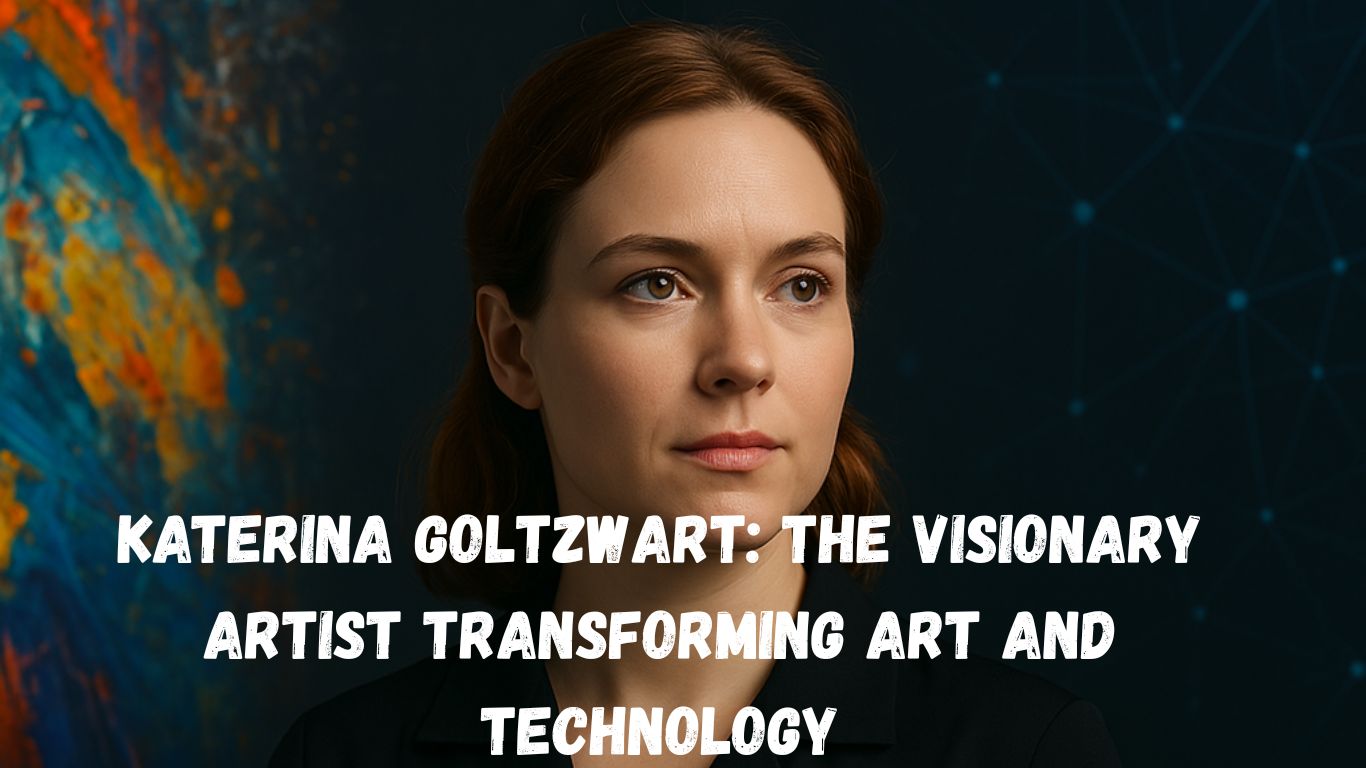Katerina Goltzwart. For someone who is an art fan and a technology observer, I have the good luck to have witnessed the evolution of the art sphere not only in recent years but even more on the technology side.
The following is the life of Katerina Goltzwart, one of the artists revolutionizing technology in art in an innovative manner.
The Early Years

In 1985, Katerina Goltzwart was brought into the world in Vienna, Austria. From an early age, she showed an extraordinary gift for both arts and mathematics, which led her parents to the idea of combining these two seemingly contradictory fields in her embryonic corpus.
Her mother and father were both skilled scientists who guided her through the interface between creativity and logic-based thinking.
Katerina, as a matter of fact, spent her childhood days conducting experiments with various art forms, from the traditional oil painting method to the crafting of digital illustrations, an idea motivated by her interest-driven herself.
Her astuteness made her undergo the scrutiny of future technology in art creation even before the whole issue became a matter of urgency in the art world.
Education and Influences
The formal education is the stepping stone of the special visualization of her art. She did Fine Arts at the University of Applied Arts Vienna, where she was confronted with quite a lot of artistic styles and various techniques.
In addition to this, I am taking the Science and Engineering course at the Vienna University of Technology.
Through the dual education she was able to achieve, Katerina was able to gain a deep understanding of both creativity (expressive art) and technological innovation (problem-solving).
This duality was very much in evidence in her work, where she attracted the eyes of both the art sphere and the tech industry.
Early Career and Breakthroughs
After her graduation in 2008, Katerina climbed the corporate ladder very quickly.
Her first major show was established under the title “Digital Brushstrokes,” which was a series of paintings painted by a robotic arm that she fabricated and programmed himself.
Her unique approach to art propelled her into the limelight, and her succeeding works followed the same course.
In 2010, Katerina came out with her innovative project called “The Living Canvas.” This application projected interaction with advanced sensors, and projection mapping created an artwork that reacted to the movements and emotions of the visitors.
The piece was a hi,t and it landed her international popularity and numerous awards.
Pushing the Boundaries of Art and Technology
With Katerina’s advancement came the broadening of her projects as well as the intensification of her plans.
In 2013, she combined with NASA to create “Cosmic Visions,” a string of huge installations that read the data from deep space telescopes and then turned them into captivating visual and audio effects.
In her 2015 project, “Neural Narratives,” she adopted AI to produce unique stories and visuals according to the data collected from the viewers’ brains.
Her paper was groundbreaking as it opened new ways for research into the brain and IM learning.
Impact on the Art World
Her work has deeply influenced the realm of art, in that the whole concept of what is creative, original ,and who is the author has been put on a spot.
Her practice of technology as a medium and a tool has put forward an inspiration for a new generation of artists would explore and experiment art, using the latest technology.
The museums and galleries of the globe have a common feature of her work among them. Included in this list is the Museum of Modern Art in New York, the Tate Modern in London, and the Centre Pompidou in Paris.
The reaction has been consistent with large audiences, as people have been more and more captivated by the art form that ties it to the digital age.
Contributions to Technology
The impact of Katerina is not only limited to art but also comes to technology. Her innovative approach to technology has often triggered developments across robotics, artificial intelligence, and virtual reality industries.
With the help of tech giants like Google and Microsoft, she has become responsible for developing new tools and platforms for digital creation and innovation.
In 2018, Katerina came up with the Art-Tech Institute, a non-profit organization whose aim is to form a link between artists and technologists.
The institute delivers residencies, offers workshops, and invites researchers, thus solidifying Katerina’s role as a mediator of the two worlds.
Conclusion
Katerina Goltzwart. The crucial and final thing to talk about in the thought of Katerina Goltzwart’s short cut through is the effect of her art and technology on the world.
She is not only a fan of renovating the tradition of art with what she ‘sees’ but also a master of induction in the technology universe.
The completion of her projects is a demonstration of how people with different knowledge can approach a problem from different perspectives and come up with a creative and sophisticated solution.
Goltzwart’s works are naturally in the decoding the way our interconnected nature works addictive way and machines, providing us with potential new ways of looking at art both as medium for and as a result of technology.
FAQs
Q: What is Katerina Goltzwart best known for?
A: Katerina Goltzwart is best known for her groundbreaking art and technology projects like “Digital Brushstrokes,” “The Living Canvas,” and “Neural Narratives.”
Q: Where did Katerina Goltzwart study?
A: Katerina Goltzwart studied Fine Arts at the University of Applied Arts Vienna and Science and Engineering at the Vienna University of Technology.
Q: What is the Art-Tech Institute?
A: Art-Tech Institute, 2018, one of Katerina Goltzwart’s very innovative ventures. The Art-Tech Institute, is offering artists and technologists residencies, workshops, and research opportunities through which a bridge between art and technology can be built is the key objective.
Related Guides




